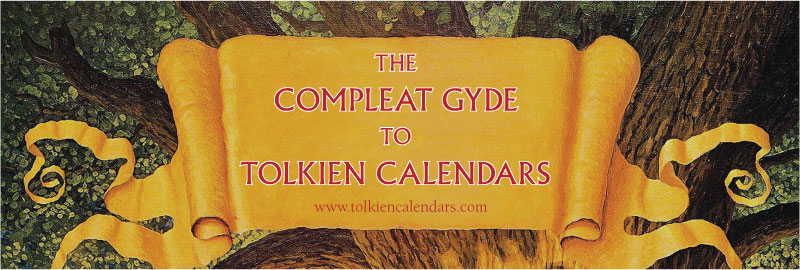Rarity Scale
The rarity scale is a less-than-scientific attempt to give collectors an idea of the scarcity of each calendar. I have based it primarily upon the number of eBay auctions in which a calendar has appeared but adjusted by the availability at various on-line booksellers, the number that I know of in the hands of other collectors or collection (e.g. - Marquette University), and the number that were created (as for the various issues of the Tolkien societies) when I have able to determine same.
| 10 | The rarest because of age, number issued, and/or condition (referring to those still mint in sealed mailers/envelopes or shrink-wrapped). Usually, I know of less than five examples of it. |
| 9 | Scarce, not impossible to collect, but most are in the hands of collectors. Usually, I know of less than 10 examples of it. Unless one appears on eBay (on average: less than once per year), you have to know someone who knows someone who has one (and is willing to part with it!) |
| 8 | May appear on eBay on average once or twice a year, or fifty or fewer were created. |
| 7 | May appear on eBay on average less than once per month, or 100 or fewer were created. |
| 6 | May appear on eBay on average one or more times each month, or 200 or fewer were created. |
| 5 | May appear on eBay on average less than once per week, or 1000 or fewer were created. |
| 4 | May appear on eBay on average one or more times per week, or more than 1000 of them were created. |
| 3, 2, 1 | Such ratings refer to calendars from current or immediately previous year. You can find them "everywhere" today. But who knows in ten years or more? |
| Code | You will note letters in parentheses following most issues. If a parenthesized letter does not appear, I do not have a copy of that issue in my collection. If a letter does appear, the code is: |
| (x) | Opened copy. |
| (m) | Mint (in unopened mailer or shrinkwrapped) or as new (if not originally issued in an mailer or shrinkwrapped.) |
| (s) | Signed by the illustrator. |
| (p) | Proof copy. |
